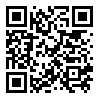Volume 10, Issue 3 (12-2023)
jhbmi 2023, 10(3): 214-222 |
Back to browse issues page
Assistant Professor of Health Information Management, Medical Informatics Research Center, Institute for Futures Studies in Health, Kerman University of Medical Sciences, Kerman, Iran
Abstract: (554 Views)
Introduction: The present study was conducted to evaluate the feasibility of telemedicine implementation in two cities in Kerman province with tourist attractions.
Method: This descriptive cross-sectional study was conducted in 2021. Research data were collected using the standard questionnaire "Telemedicine Assessment Tool," designed by the Institute for Medicare (United States). Using the G-power software, the sample size of 68 people was determined. The researchers collected the required data in person at the hospitals under study. The collected data were analyzed using descriptive and analytical statistical methods through SPSS version 26.
Results: According to demographic characteristics, the majority of people were women (78.7%), aged less than 30 years old (37.3%), with less than five years of work experience (40.0%), bachelor’s degree (88.0%), and clinical (57.3%). Regarding P-value, there is a significant difference between telemedicine services in terms of importance. Therefore, telemedicine services, consultation with specialists outside the hospital, patient referrals, and remote drug prescribing had respectively the highest priority. In contrast, changing the processes and structure of the hospital had the lowest priority. The lack of technical staff and the problems of initial costs were the main obstacles to the use of telemedicine, and the attitude of employees and competition were the least essential obstacles.
Conclusion: Due to the tourism situation of the studied cities, hospitals must try to establish telemedicine. In this regard, investment to solve the problems of initial costs and technical staff has priority.
Method: This descriptive cross-sectional study was conducted in 2021. Research data were collected using the standard questionnaire "Telemedicine Assessment Tool," designed by the Institute for Medicare (United States). Using the G-power software, the sample size of 68 people was determined. The researchers collected the required data in person at the hospitals under study. The collected data were analyzed using descriptive and analytical statistical methods through SPSS version 26.
Results: According to demographic characteristics, the majority of people were women (78.7%), aged less than 30 years old (37.3%), with less than five years of work experience (40.0%), bachelor’s degree (88.0%), and clinical (57.3%). Regarding P-value, there is a significant difference between telemedicine services in terms of importance. Therefore, telemedicine services, consultation with specialists outside the hospital, patient referrals, and remote drug prescribing had respectively the highest priority. In contrast, changing the processes and structure of the hospital had the lowest priority. The lack of technical staff and the problems of initial costs were the main obstacles to the use of telemedicine, and the attitude of employees and competition were the least essential obstacles.
Conclusion: Due to the tourism situation of the studied cities, hospitals must try to establish telemedicine. In this regard, investment to solve the problems of initial costs and technical staff has priority.
| Rights and permissions | |
 |
This work is licensed under a Creative Commons Attribution-NonCommercial 4.0 International License. |





